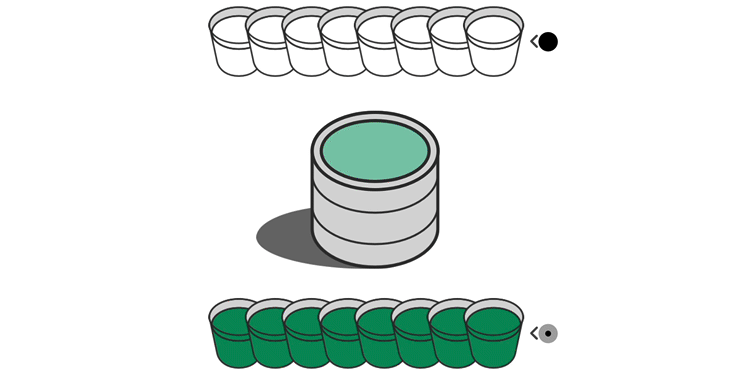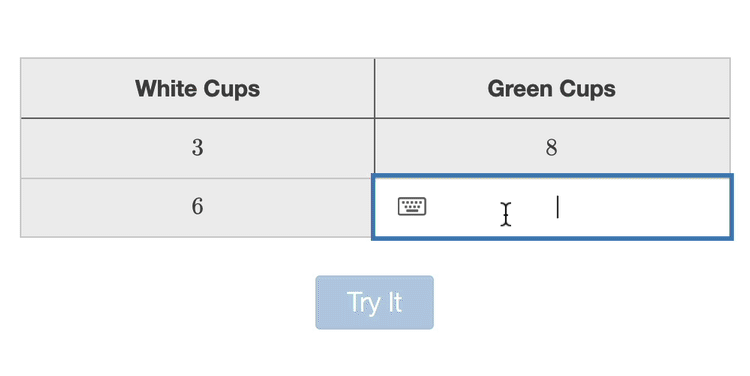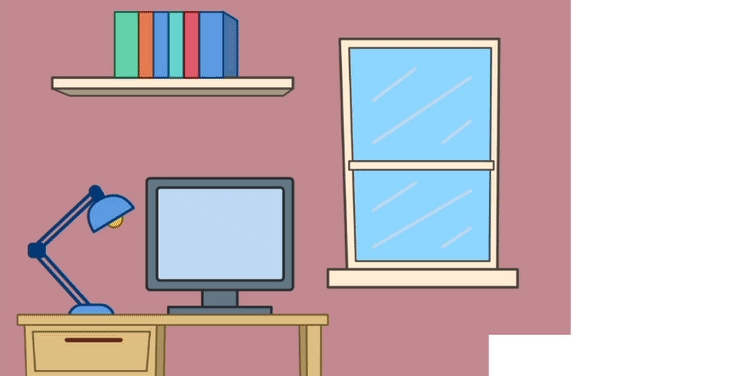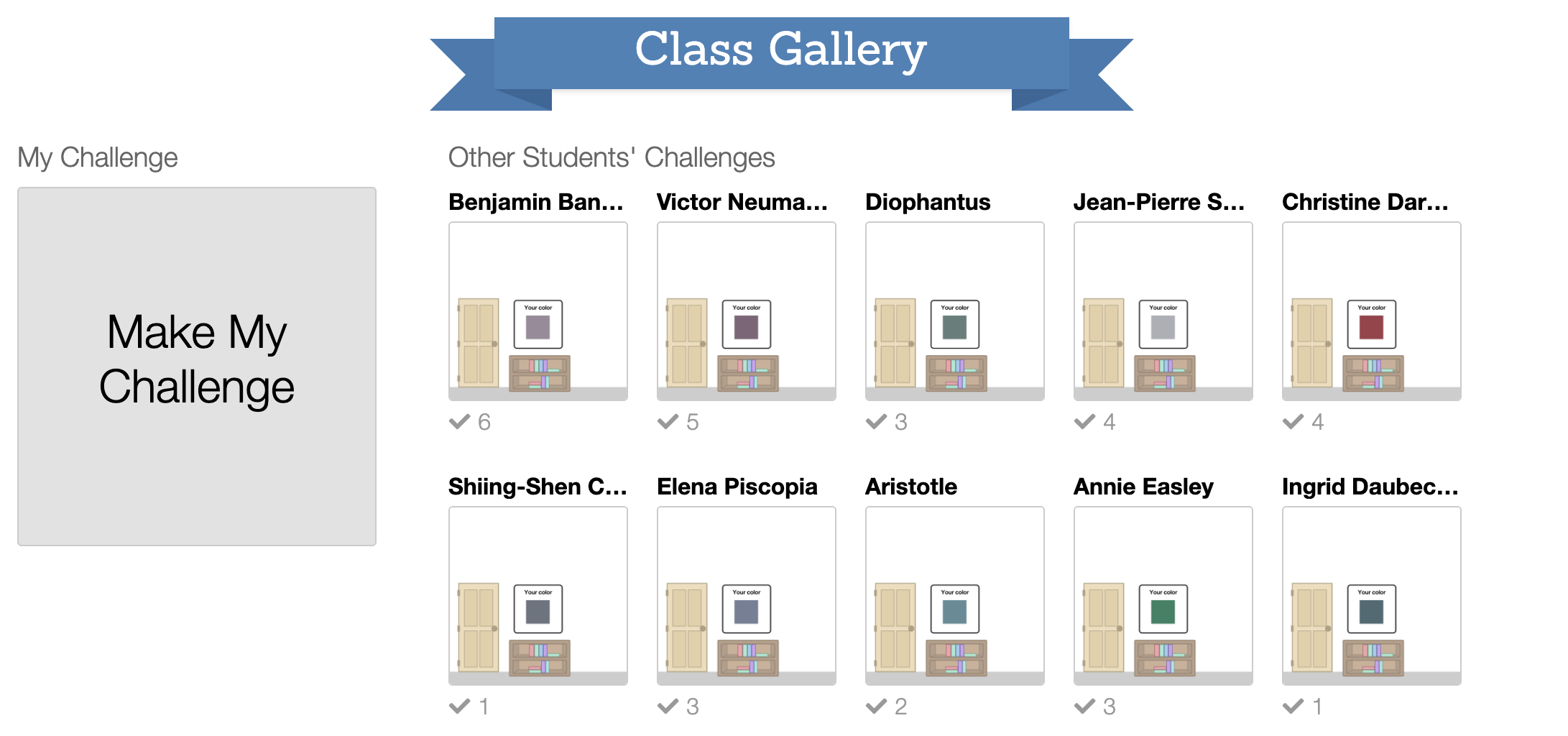Welcome to a series of posts sharing how we #Desmosify the curriculum from Open Up Resources/Illustrative Mathematics. You can use this lesson for free, or sign up to get many more activities just like it in our core middle school curriculum!
Here’s how we #Desmosified an Open Up Resources/IM lesson introducing students to equivalent ratios.
Desmosification #1: Create concrete connections.
The original lesson we #Desmosified seeks to connect a student’s understanding of ratios to the taste of a drink. Helping a student connect their developing knowledge to some piece of concrete knowledge is a great way to strengthen both.

Contexts that students can touch and taste have lots of appeal. We chose a different context, however, one with several unique advantages.

In our lesson, students adjust the amount of green and white paint to create different color mixtures, some equivalent and others not, offering us two other unique #Desmosifications.
Desmosification #2: Give feedback that causes thinking.
A major challenge students experience in math class is getting zero feedback on their ideas or getting bad feedback. Kluger and DeNisi (1996) found that one third of feedback interventions have a negative effect on student learning.
When we ask students to make the same color with a different number of cups of paint, the student starts developing ideas. In a paper-based math lesson, they may not receive any feedback on those ideas. In many digital math lessons, students are told immediately that their idea is right or wrong. Dylan Wiliam writes that “feedback should cause thinking.” Neither of those kinds of feedback will cause much more thinking.

In our activity, students enter a number of cups and see the color they made. This lets students test conjectures in ways that would be much harder given the taste of a drink. Also, with the drink, the difference between equivalent and inequivalent ratios is perhaps more subtle than it is here, where you can see the difference between the colors. (We also describe the color difference in words for students who are vision-impaired.)

Desmosification #3: Create opportunities for students to experience themselves and their classmates as mathematicians.
In many math classes, the roles are well-defined. Teachers ask the questions and students answer them. We build technology that helps students understand that they can be authors and askers of questions just as much as any adult.

So at the end of this lesson, we invite students to create a color by mixing red, green, blue, and white paint, and then to specify how much of a color they want. That information becomes a question for their classmates to solve in the Class Gallery, making more visible everyone’s capacity for mathematical thought, not just the teacher’s.
Behind the Scenes
Desmos lesson developer Sean Sweeney describes one of the core design dilemmas of the lesson and how our team found its way through it.
One challenging part of creating Paint was balancing the on-screen feedback we provided for students. We really wanted to include text-based feedback on each color to help support students that could have difficulty telling those colors apart, but it became tough to provide that feedback without being too descriptive about exactly what students should do to get the right mix. We discussed and experimented quite a bit to strike the right balance between interpreting the colors on screen for every possible color combination and allowing students the room to think for themselves on the relationships between paint combinations. In the end, we made a system that attempts to describe the color the way a person might instead of just simply telling students what paints to add or remove.
What Did Teachers Think?
Students liked the ability to make up their own mixtures of paint.
The visual feedback of the mixed paint colors was great!
What Did Students Think?
I wish ALL subjects could use Desmos!
It’s like a game—like solving a puzzle!
This is my favorite Desmos lesson we’ve done so far this year.
What I get to make my own paint color!?!
Shouts Outs
- Open Up Resources/Illustrative Mathematics for creating fantastic lessons we get to adapt. Also check out their own paint-mixing lesson in Grade 6.
What’s Next?
- Invite your students to play with Paint!
- Get activities like this every day in our core middle school math curriculum.
